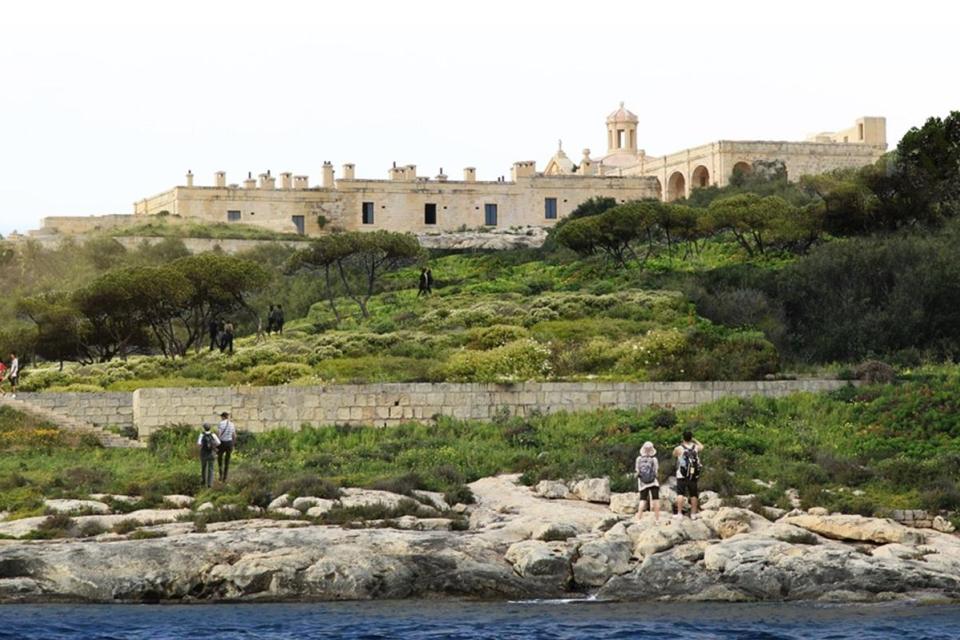Open spaces at the heart of MIDI’s development plans for Manoel Island
Preserving this unique island and making it accessible, is at the heart of MIDI’s development for Manoel Island

While Manoel Island is a critical part of Malta’s history, it remains a much-loved part of the local landscape and culture. Preserving this unique island and making it accessible, is at the heart of MIDI’s development for Manoel Island.
Right from the start the objective was to create a vibrant project that blends history, large open spaces, and an array of residential and mixed-use developments. The aim is to promote sustainable habits, while at the same time create a pedestrian friendly environment which is unique and not just an extension of the mainland. A place with a genuine sense of community and belonging while deeply rooted on the Maltese culture. It is envisaged that this synergy will strengthen the attraction of the island to both potential visitors and residents.
 175,000sqm of public open space equivalent to more than 60% of MIDI’s concession.
175,000sqm of public open space equivalent to more than 60% of MIDI’s concession.One of the key drivers of this development is the extent of the new public open space. The aspiration of this development is to create several new open spaces in prominent places within the development which, while integrating better the heritage buildings, create open spaces of recreation for the public’s enjoyment.
Overall, the Manoel Island project will boast a total of 175,000sqm of public open spaces, of which 80,000sqm is the natural glacis public park surrounding Fort Manoel. This park will be rehabilitated to provide more accessible spaces for the public to relax and enjoy the surroundings of the lush greenery surrounding the park.
 One of the key drivers of this development is the extent of the new public open space.
One of the key drivers of this development is the extent of the new public open space.Furthermore, a new 35,000sqm of public open space has been integrated into the development, 10,000sqm of which will become an indigenous public garden, while the rest of the area will include a meditation garden and public plazas spanning from the entrance of the Island to the Lazzaretto.
The development also contemplates that the footprint of the new buildings to be developed on Manoel Island be scaled down to cover less than 8% of MIDI’s concession with public open spaces covering more than 60% of MIDI’s concession.
 The quantity and quality of public open spaces are fundamental objectives of the development.
The quantity and quality of public open spaces are fundamental objectives of the development.The quantity and quality of public open spaces are fundamental objectives of the development, with a harmonious balance between the public and private realm. A great proportion of the land will remain accessible to the public and there will be improved accessibility to buildings of cultural heritage importance and the foreshore.
The creation of an attractive pedestrian streetscape and environment with a reduced dependency on vehicles is also a key objective in making the island a pedestrian priority area.
 A harmonious balance between the public and private realm.
A harmonious balance between the public and private realm.History will be reconstructed not just through the sensitive restoration of the unique Cattleshed, the oldest standing building on Manoel Island, but also by reinstating the memory of the historic Bovile route. This route re-lives the memory of the livestock being taken to quarantine, from the waterfront, to the Cattleshed. The marina promenade will incorporate the original quay wall within its design, an element recently unearthed during exploratory digs. The marina will be protected by a floating breakwater which will replace the fixed breakwater which was originally contemplated. By providing a floating breakwater the impact on the environment is largely mitigated and the location of the breakwater ensures that the dive wreck site remains protected.
 As a responsible developer MIDI will continue to work closely and transparently with all stakeholders.
As a responsible developer MIDI will continue to work closely and transparently with all stakeholders.No efforts have been spared to ensure that the Lazzaretto will given a new lease of life and will be used for mixed use and hospitality purposes. The restoration of the heritage buildings will be undertaken at a cost estimated at more than €40 million, which includes the works already undertaken to restore Fort Manoel.
The residential development will consist of three clusters located in two specific areas to ensure that the heritage value of the archaeological findings and historical buildings are preserved. The height of the new buildings is limited to four to five floors and the highest point of the development will not exceed the height of the buildings in Fort Manoel.
 Public open spaces will cover more than 60% of MIDI’s concession.
Public open spaces will cover more than 60% of MIDI’s concession.As a responsible developer MIDI will continue to work closely and transparently with all stakeholders, by listening, engaging, and providing updates throughout the project, thereby ensuring the delivery of significant benefits to the community for the long term.
More information about the new MIDI Manoel Island masterplan can be found at www.manoelisland.com.mt.